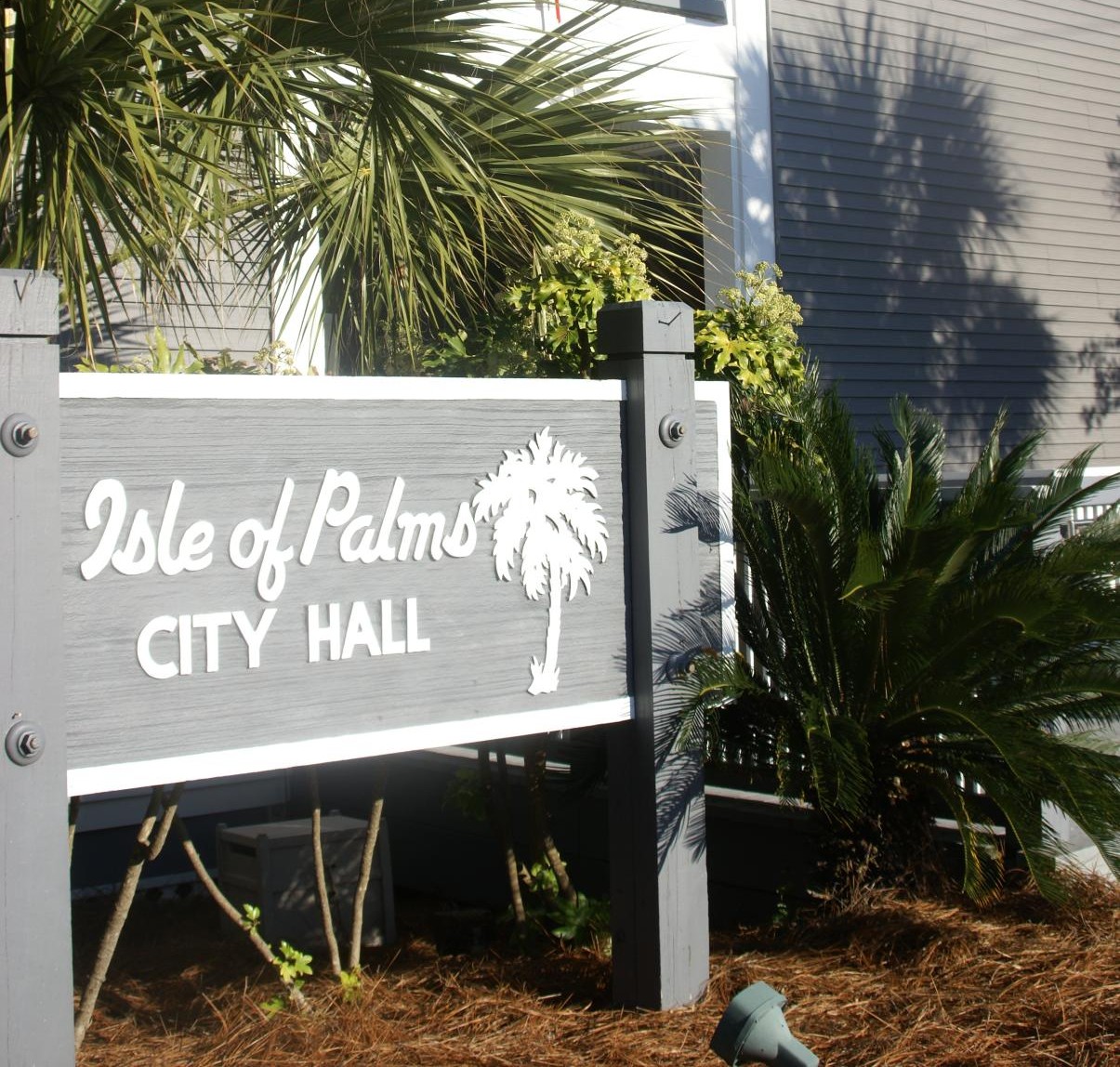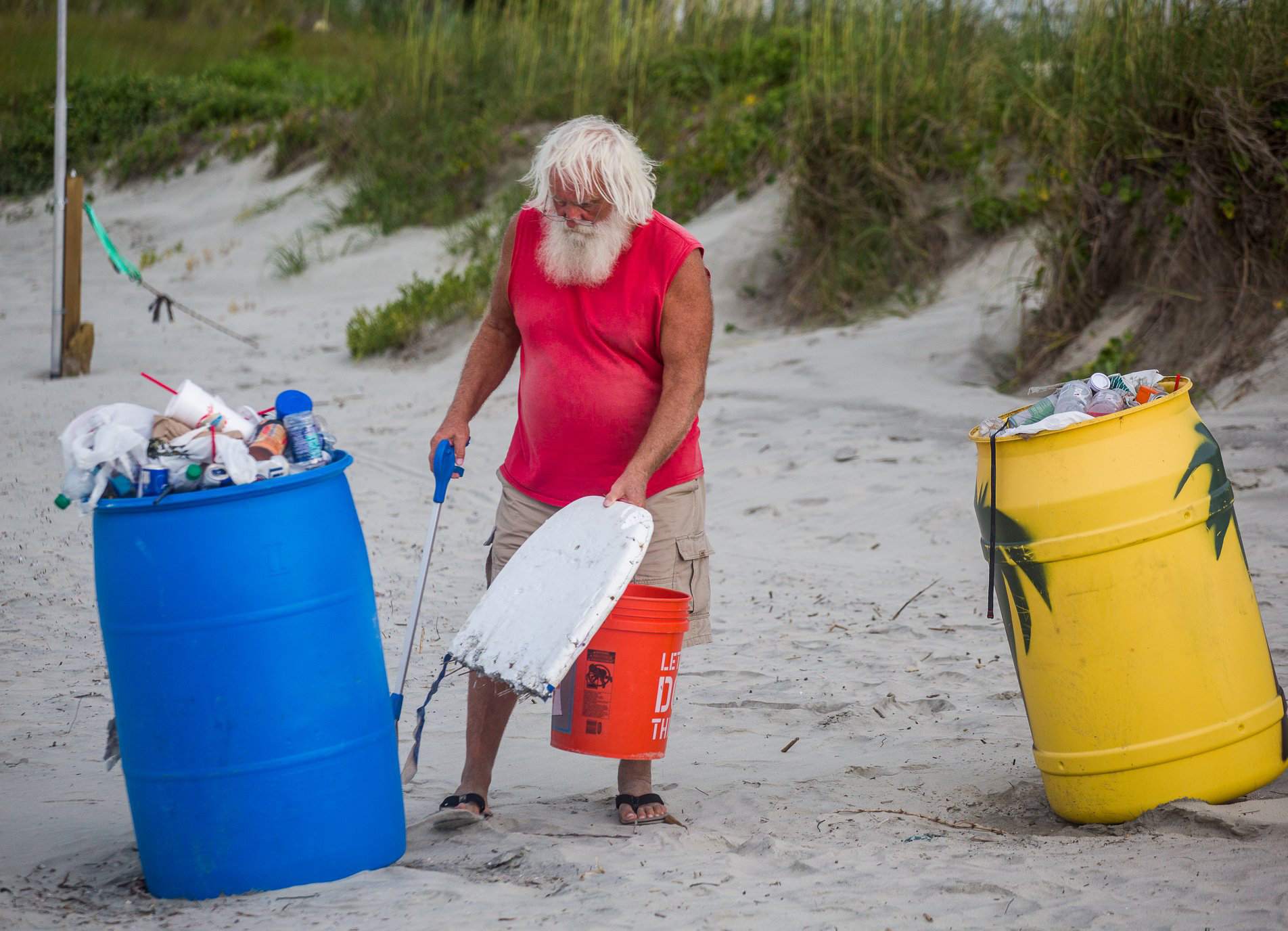Purpose
To protect the future of our island community and natural ecosystems by prioritizing environmental conservation, sustainability, resiliency and adaptation. In the face of dramatic challenges that include pollution, threatened natural resources and forecasted sea-level rise of one (1) foot by 2050, the city must act urgently and mindfully while engaging residents, visitors, and organizations in solutions.
Vision
To be a welcoming, environmentally conscious and resilient coastal community committed to enhancing the quality of life for those who come here to live, work and play.
View Summary: priorities and goals
Priority: Leadership
Strengthen leadership on environmental challenges – including those that threaten the livability and economic health of our island – inspiring and earning the respect of citizens, visitors and other communities.

Goal 1: Natural Resource Management
Focus on resiliency and natural resource management, exploring adding STEM-trained staff devoted to these areas, as other coastal communities in the region already have.
- Preserve, protect, manage and enhance the island’s natural resources – including the beach, salt marsh and natural areas in the island’s interior.
- Secure grants, provide community education, and collaborate with neighboring communities and state agencies.
- Have in-house, STEM-focused staff ready for conversations on environmental policy and practices.
- Protect the city’s best interests with cost-effective planning and increased oversight of contractors for resiliency initiatives, including beach preservation and drainage projects.
Goal 2: Ordinances
Use ordinances related to environmental issues more effectively.
- Proactively enforce and track violations to environmental ordinances, including those related to beach lights, litter, building, development and tree protections.
- Evaluate whether more resources (ex. staff) are needed for proper enforcement.
- Coordinate with property managers and cleaning companies on proper garbage disposal and beachfront lights out policies.
- Require acknowledgement of city’s beach rules as part of the online parking checkout process.
Goal 3: Data Collection and Usage
Collect and use environmental data to inform decisions and educate the public.
- Develop consistent data collection that includes water quality testing for the ocean, creeks, marsh and interior; surveys of related wildlife and ecosystems; and sea level rise measurements.
- Make environmental data easy to understand, access and share.
Goal 4: Resiliency and Adaptation
With Planning Commission leadership and involvement of the Environmental Advisory Committee, develop a unified plan for resiliency and adaptation.
- Advance recommendations from city’s developing Sea Level Rise Adaptation Plan.
- Model, map & monitor areas most susceptible to sea level rise, flooding & storm surges.
- Predict social and economic impacts of climate changes, including cost calculations.
- Explore recommendations for zoning, retrofitting, setbacks for new construction.
- Determine and articulate long-term goals for Adaptation plan that are proactive and transparent. Communicate these elements effectively to the public.
Goal 5: Energy Practices
Adapt city’s energy practices as a model for residents, visitors, businesses and other communities.
- Add solar panels to city buildings when it makes sense for sun exposure and roof replacement schedules.
- Explore transition to battery-powered landscaping equipment to reduce carbon emissions, air & noise pollution.
- Consider requesting sustainable practices in city’s request for proposals and bids.
- Encourage fuel efficiency as a consideration when buying new vehicles.
- Evaluate feasibility of safely of adding electric vehicle charging stations.
Goal 6: Promotion
Promote Isle of Palms’ natural resources and positive environmental practices.
- Make IOP’s environmental leadership a clear and consistent part of the city’s brand.
- Highlight related wins and best practices through the city’s communication channels, including the developing environmental section of iop.net.
- Secure more related media coverage.
- Add signs to public dock to highlight the location's natural resources, geography and history.
- With IOP Cleanup Crew, pursue IOP Conservation Station exhibit at Front Breach.
Goal 7: Effective Communication
Deepen stakeholder engagement through effective communications.
- Develop plan to increase awareness of challenges and solutions that includes “Do No Harm” messaging for residents, visitors, developers and businesses.
- Provide QR codes in city signage and required messaging for STR’s that direct visitors to environmental rules and best practices.
- Explore ways to better share rules with non-English speaking visitors.
- Create a guide – available electronically and in print form – for residents, developers, contractors and property managers to promote IOP native plants, trees, eco-friendly landscaping and lighting practices.
- Add an annual eco-themed event to the Recreation Department’s annual calendar.
- Involve public in South Carolina Aquarium’s Searise sign project.
Priority: Beach Restoration and Preservation
To maintain a healthy, wide sandy seven miles of beach to support and protect property, public use, ecosystems and the economy.
Goal 1: Monitor
Monitor the health of the entire beach.
- Be proactive rather than reactive in beach preservation with quarterly surveying and monitoring.
- Consistently track, project and evaluate the impact of sea level rise, king tides and storms.
Goal 2: Be Prepared
Be prepared for action.
- Pursue promising “natural defense” strategies.
- Have standing permits for agreed-upon projects for beach restoration, shoal management and emergency situations.
Goal 3: Informed Decision Making
Make informed decisions, striving to “Do no harm.”
- Be fiscally responsible without letting the lowest immediate expense drive decisions.
- Involve Environmental Advisory Committee in review of beach preservation efforts.
- Develop consistent signage policies on dune preservation, with approved options that residents can deploy on their property.
- Include acknowledgment of beach rules as part of the permitting process for events.
Goal 4: Funding Model
Firmly establish a fiscally sound funding model for beach renourishment.
- Create a collaborative sense of shared responsibility with the state, local communities and county governments, beach users, and property owners.
- Annually fund beach restoration and maintenance in the city’s budget.
- Continue to explore ways to increase consistent revenue streams for beach renourishment.
- Lobby SC legislators to take on greater fiscal responsibility for maintaining state’s beaches, which they maintain jurisdiction over.
- Consider a policy to only use city funds in conjunction with granted property easements and funding from shared stakeholders – unless a disaster has been declared.
Priority: Flooding/Storm Resiliency
Become more disaster resistant by embracing solutions to increased flooding and storm risks.

Goal 1: Drainage Projects
Accelerate already existing comprehensive list of city drainage projects.
- Pinpoint and generate more funding for the remaining major projects, including grant opportunities, to cover estimated costs.
- Put more projects in the pipeline, rather than 1-2 at a time.
Goal 2: Septic Systems and Grinder Pumps
Support transition away from septic systems and grinder pumps.
- Work with Isle of Palms Water and Sewer Commission to aggressively pursue grant funding – possibly engaging a federal lobbyist – to support extension of public sewer system.
- Encourage neighborhoods to work collaboratively to facilitate connection to the public system without grinder pumps.
- Routinely collect floodwater samples to pinpoint problems and help prioritize areas where individual onsite disposal systems should be replaced.
- Explore funding to aid elderly and fixed income residents in connecting their residences to the public sewer system.
- Inspect septic systems upon transfer of ownership to create an inventory of existing systems, collect data on system failures and educate new owners.
Goal 3: Underground Power Lines
Advance underground power line projects to protect power use and trees.
- Work with energy provider to accelerate already requested projects.
- Develop master plan for converting all remaining areas to underground lines.
- Consider location of at-risk palmettos – important to our community’s identity & resiliency – and other significant native trees in setting priorities.
- Press energy provider to drop use-it-or-lose-it provision of its annual contributions to the non-standard service fund for Isle of Palms, which can help pay for underground projects but currently must be used within five to six years.
Priority: Building an Eco-Corridor
Establish IOP and surrounding natural ecosystems, including salt marsh, as a thriving eco-corridor that also supports flooding resiliency.
Goal 1: Collaboration
Engage and work with conservation organizations and neighbors.
- Join the South Atlantic Salt Marsh Initiative (SASMI).
- Consult with groups like Charleston’s M.A.R.S.H. project, Charleston Waterkeepers, Charleston Climate Coalition, South Carolina Aquarium, Barrier Island Eco Tours, Coastal Expeditions and Audubon Society.
- Partner with neighboring coastal communities, especially Mount Pleasant & Sullivan’s Island.
Goal 2: Maximizing Native Plants & Trees
Maximize opportunities for native plants throughout the island.
- With guidance from local experts, emphasize native plants and gardens at all city parks and properties.
- Include in Request for Proposals (RFPs) for landscaping.
- Target city properties at risk of flooding for adding examples of “rain gardens” and dry ponds.
- Encourage and provide incentives for residents, businesses, developers, Wild Dunes Resort and Homeowner Associations (HOA’s) to increase native plants on residential and commercial properties.
- Pursue grants to support re-wilding, rain gardens, salt marsh retreat in vulnerable residential areas.
- Involve residents in planting and monitoring vegetation to help stabilize drainage ditches/canals.
Goal 3: Tree Ordinances
Review and establish ordinances that are friendly to native trees.
- Evaluate and modify the city’s tree ordinances to elevate conservation of native tree species such as palmetto, live oak, pine and wax myrtle.
- Explore funding a city-wide tree survey to document all native trees on the island.
Priority: Litter
Strive for zero litter in public places and natural spaces.

Goal 1: Removal
Remove litter routinely with paid personnel and volunteers.
- Recruit volunteer neighborhood captains for regular cleanups of non-commercial sections of beach and island’s interior.
- Create paid IOP Conservation Team to target litter in busy beach and commercial areas by adding seasonal, part time positions geared to students interested in eco/civic careers. (Isle of Palms Cleanup Crew & SC Aquarium’s conservation team can guide educational component.)
- In addition to existing Front Beach setup, explore adding the following to high-traffic beach access paths, with placement closer to the street than dunes:
- Cleanup bucket tree
- "No Toys Left Behind” bin
- Bench for visitors to help them collect their things
Goal 2: Beach Trash Collection
Reconsider and improve city’s beach trash collection system.
- Consider transitioning to a new system with covered trash receptacles to prevent trash from turning into litter.
Goal 3: Sustainable Practices
Support sustainable practices in island businesses and restaurants.
- Adjust packaging ordinances to close loopholes and align with neighboring municipalities.
- Partner with Chamber of Commerce and Isle of Palms Cleanup Crew on workshops for businesses on sustainability practices.
Goal 4: Messaging
Provide more consistent and effective litter messaging.
- Consistent message on welcome signs to “Leave Only Footprints” and “See Beach Rules at www.iop.net .”
- Signage at ALL public beach access points with No Smoking message + QR code or complete list of restrictions for beachgoers.
- More local promotions with links/QR codes pointing to iop.net “Beach Rules” – including tie-ins with Beach Shuttle.